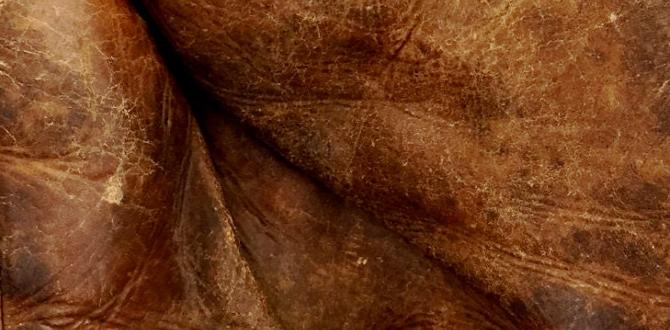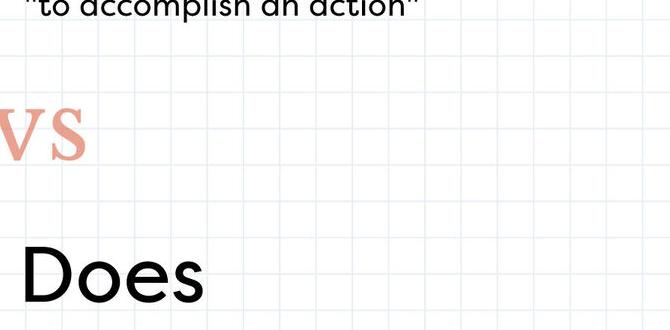A Louisville Slugger catcher’s throat guard is a vital piece of adult protective equipment designed to shield your neck from errant pitches, foul tips, and even accidental impacts during a baseball game. Understanding the importance and proper selection of these guards ensures maximum safety and allows you to focus on your game. This guide will walk you through everything you need to know.
Louisville Slugger Catchers Throat Guard: Essential Adult Protection
Hey there, fellow ballplayers! John P. Miller here from FriskMode, and today we’re diving into something super important for any adult catcher: the Louisville Slugger throat guard. You know, that crucial piece of gear that keeps your neck safe when you’re out there squatting behind the plate. Getting hit in the throat with a sharp foul tip or a wild pitch can really ruin your day (and maybe your season!), so having the right protection is a non-negotiable. We’re going to break down why these guards are a big deal, how to pick the best one for you, and what makes Louisville Slugger a go-to brand.
Why a Throat Guard is Non-Negotiable for Adult Catchers
Let’s cut to the chase: catching is tough work, and it’s inherently risky. While catcher’s masks and chest protectors get a lot of attention, the throat is a surprisingly vulnerable area. A direct hit can cause serious injury, from bruising to more severe internal damage. Think about a fastball that ricochets off your mitt, or a foul tip that sneaks under your mask. These aren’t rare occurrences; they happen in games at all levels.
For adult players, the stakes can feel even higher. You might be playing in a competitive league, or simply want to protect yourself from a significant injury that could impact your work or daily life. A properly fitted throat guard acts as a crucial buffer, absorbing impact and significantly reducing the risk of a direct blow to your neck.
The Louisville Slugger Advantage
Louisville Slugger isn’t just a name; it’s a legacy in baseball. For generations, they’ve been at the forefront of bat innovation and equipment design. When it comes to catcher’s gear, they bring that same commitment to quality, durability, and player protection. Why is this important for a throat guard?
- Brand Reputation: Louisville Slugger stands behind its products. They understand the demands of the game and design gear to meet those needs.
- Quality Materials: They typically use high-impact plastics and robust attachment systems that are built to last and withstand the rigors of frequent use and impacts.
- Player-Focused Design: Their gear is often designed with direct input from players and coaches, meaning they consider factors like coverage, fit, and comfort.
Choosing a Louisville Slugger throat guard means you’re opting for a brand that respects the game and the players within it. They’ve consistently delivered equipment that helps players perform at their best while staying safe.
Key Features to Look For in a Louisville Slugger Throat Guard
Not all throat guards are created equal, even within the same brand. When you’re shopping for your Louisville Slugger throat guard, keep these key features in mind:
- Material: Most high-quality throat guards are made from durable, high-impact plastic. This material is designed to absorb and deflect force effectively. Look for something that feels sturdy but isn’t so rigid that it’s uncomfortable.
- Coverage: The guard should extend far enough down your neck to cover the most vulnerable areas. Check for a design that offers ample protection without being overly bulky or restrictive.
- Attachment System: How does it connect to your mask? Most guards use straps or clips. Ensure the system is secure, easy to adjust, and compatible with your specific catcher’s mask. You don’t want it to come loose during a crucial play.
- Flexibility and Mobility: While it needs to be protective, the guard shouldn’t hinder your ability to move. You’ll be squatting, turning your head, and communicating with your pitcher. The guard should allow for a reasonable range of motion.
- Compatibility: This is huge! Make sure the throat guard you choose is designed to fit your specific Louisville Slugger catcher’s mask (or any brand, if you’re not set on a matching set). Some guards are universal, while others are model-specific.
Types of Throat Guards for Adult Catchers
Louisville Slugger generally offers a few variations of their throat guards, primarily differing in their design and how they attach. The most common types you’ll encounter include:
- Clip-On Guards: These are the most prevalent. They typically feature a curved plastic piece that attaches to the lower bars of your catcher’s mask using sturdy clips or straps. They are easy to install and remove.
- Integrated Guards: Some catcher’s masks might come with a built-in or add-on throat protector that’s designed to be a more permanent fixture. While less common in the aftermarket throat guard category, it’s good to be aware of.
For most adult players looking to add protection to an existing mask, the clip-on style is the way to go. Louisville Slugger excels in providing reliable, easy-to-use clip-on options.
How to Properly Install and Adjust Your Throat Guard
Installing your Louisville Slugger throat guard is usually straightforward, but getting the fit just right is key to both comfort and protection. Always refer to the manufacturer’s instructions, as designs can vary slightly.
Step-by-Step Installation:
- Identify Attachment Points: Look at your catcher’s mask. You’ll see the lower horizontal bars where the mask meets the jaw area. These are where the throat guard will attach.
- Position the Guard: Place the throat guard against the mask, aligning its clips or straps with these attachment points.
- Secure the Clips/Straps:
- For clips: Slide the clips over the metal bars of the mask until they snap securely into place. Ensure they are firmly seated.
- For straps: Loop the straps around the mask bars and fasten them using the provided buckles, Velcro, or snaps. Tighten them to keep the guard from shifting.
- Adjust for Fit: Once attached, put on your catcher’s mask. The throat guard should rest comfortably against your neck, just below your chin and covering the vulnerable area above your chest protector. It shouldn’t pinch, rub, or feel too loose. You might need to slightly adjust the position or tension of the straps to find the perfect spot.
- Check for Movement: Gently move your head up and down and side to side. The throat guard should stay securely in place without restricting necessary movement.
A properly fitted throat guard should feel like a natural extension of your mask, providing confidence without being a distraction.
When to Replace Your Throat Guard
Even the best equipment has a lifespan. It’s crucial to know when your Louisville Slugger throat guard needs to be replaced to ensure you’re always protected. Here are the signs:
- Cracks or Fractures: Any visible cracks, even small ones, compromise the structural integrity of the guard. A hard impact could cause a cracked guard to fail.
- Loose Attachments: If the clips are bent, the straps are frayed, or the fastening mechanism is no longer secure, it’s time for a new one. A guard that doesn’t stay put is useless.
- Significant Warping: If the plastic has become noticeably warped or misshapen from heat or repeated impacts, it might not provide optimal protection.
- Previous Major Impact: If you’ve taken a direct, hard hit directly to the throat guard, it’s a good idea to consider replacing it. While it might look fine, the plastic could have internal stress fractures that aren’t visible. It’s better to be safe than sorry.
- General Wear and Tear: After a few seasons of consistent play, even without visible damage, the material can degrade. If it looks faded, brittle, or just worn out, think about an upgrade.
Regularly inspecting your gear is part of smart play. Replacing your throat guard when needed is a small investment compared to the potential cost of an injury.
Care and Maintenance for Longevity
To get the most out of your Louisville Slugger throat guard, a little care goes a long way. Here’s how:
- Cleaning: After games or practices, especially in humid or dirty conditions, clean your throat guard. Use mild soap and water, and a soft cloth or sponge. Avoid harsh chemicals or abrasive cleaners, which can damage the plastic.
- Drying: Always allow the throat guard to air dry completely before storing it. Storing wet gear can lead to mold or odor issues.
- Storage: Store your catcher’s mask with the throat guard attached in a cool, dry place, away from direct sunlight and extreme temperatures. Prolonged exposure to heat (like in a car trunk on a hot day) can warp the plastic.
- Inspection: Make it a habit to quickly inspect your throat guard for any signs of damage (as mentioned above) before each use.
Proper maintenance ensures your gear performs reliably when you need it most.
Beyond the Throat Guard: A Complete Catcher’s Safety Checklist
While a throat guard is essential, it’s just one part of a comprehensive safety setup for any adult catcher. To truly protect yourself, consider these other vital pieces of equipment and practices:
Essential Catcher’s Gear:
- Catcher’s Mask: The primary defense for your face and head. Ensure it fits snugly and meets current safety standards (like NOCSAE certification for competitive play).
- Chest Protector: Covers your torso and abdomen, protecting vital organs from wild pitches and foul tips.
- Shin Guards: Protect your lower legs and knees from foul balls, impacts, and sliding plays.
- Catcher’s Mitt: A specialized glove designed for durability and shock absorption when receiving high-velocity pitches.
- Athletic Cup: Crucial for protecting the groin area from direct impacts.
- Sliding Shorts/Pants: Offer padding for hips and thighs during slides and protect against turf burn.
Training and Awareness:
Beyond equipment, good technique and awareness are your best allies:
- Proper Squatting Technique: A solid stance provides a better target and helps you absorb impacts more effectively.
- Awareness of the Ball: Always keep your eye on the ball, from the pitcher’s hand to your mitt.
- Communication: Clear signals with your pitcher and infielders can prevent collisions and dropped balls.
- Physical Conditioning: Developing strength, flexibility, and stamina specific to catching can help you handle the physical demands and reduce injury risk. For excellent conditioning advice, check out resources from organizations like the NCAA, which often provides sport-specific training and safety guidelines that can be adapted.
A holistic approach to safety—combining quality gear with smart play and conditioning—is the best way to stay on the field and enjoy the game.
Louisville Slugger Catchers Throat Guard Comparison
While Louisville Slugger offers consistent quality, models can vary slightly in design and price. Here’s a general overview you might see:
| Feature | Model A (Example) – All-Around Protection | Model B (Example) – Lightweight Design | Model C (Example) – Enhanced Fit |
|---|---|---|---|
| Material | High-impact ABS plastic | Durable composite blend | Reinforced polymer |
| Coverage | Standard lower jaw and neck | Slightly shorter for mobility | Extended coverage for maximum safety |
| Attachment | Secure clip system | Adjustable Velcro straps | Spring-loaded clips with strap option |
| Weight | Average | Lightweight | Slightly heavier for durability |
| Typical Price Range ($) | $15 – $25 | $20 – $30 | $25 – $35 |
| Best For | General adult play, good balance of protection and comfort. | Players prioritizing maximum agility and minimal weight. | Serious adult players seeking the highest level of protection. |
Note: Specific model names and features can change. Always check the product description for the most up-to-date information. The prices are estimates and can vary by retailer and region.
When looking at a specific Louisville Slugger throat guard, pay attention to reviews from other adult players. Their experiences can offer valuable insights into how a particular model performs in real-game situations. You can often find these guards on major sporting goods websites or through reputable baseball equipment retailers.
When the Unthinkable Happens: What to Do
Despite the best protective gear, accidents can happen. If you or a teammate takes a direct impact to the throat area, even with a throat guard, it’s important to know the immediate steps:
- Stop Play Immediately: If you’re the one hit, signal to the umpire and stop the play. If you’re a teammate or coach, do the same.
- Assess the Injury: Check for signs of difficulty breathing, severe pain, bleeding, or swelling.
- Seek Medical Attention: Even if the injury seems minor at first, it’s always best to have it checked out by a medical professional. Throat injuries can sometimes have delayed symptoms or complications.
- Do Not Move the Player Unnecessarily: If there’s any suspicion of a neck injury, try not to move the person until medical professionals arrive.
- Report the Incident: For organized leagues, ensure the incident is reported according to league rules.
Your health is paramount. Don’t ever try to “tough it out” with a potential throat or neck injury.
Frequently Asked Questions (FAQ)
Q1: Are Louisville Slugger throat guards really necessary for adult players?
A: Yes, absolutely. While you might not have seen many adult recreational leagues mandate them, they are a critical safety device. A foul tip or errant pitch to the throat can cause serious injury, and a throat guard provides essential protection.
Q2: Will a Louisville Slugger throat guard fit any catcher’s mask?
A: Most Louisville Slugger throat guards are designed to fit most standard catcher’s masks, particularly those from Louisville Slugger itself. However, it’s always best to check the product specifications or try fitting it onto your mask before purchasing to ensure compatibility, especially if your mask is from a different brand.
Q3: How do I clean my catcher’s throat guard?
A: Clean it with mild soap and cool water, using a soft cloth or sponge. Rinse thoroughly and let it air dry completely. Avoid harsh chemicals or abrasive cleaners, as they can damage the plastic.
Q4: Can a throat guard restrict my vision or movement?
A: A properly fitted throat guard should not significantly restrict your vision or essential movements like looking down or turning your head. If yours is, it might be too bulky, improperly adjusted, or not the right design for your mask. Small adjustments or a different model might be needed.
Q5: What’s the difference between throat guards for youth and adults?
A: Adult throat guards are generally designed to be larger and offer more coverage to accommodate adult anatomy. They also tend to be made with more robust materials to withstand the higher velocity of pitches common in adult leagues. Youth sizes are scaled down accordingly.
Q6: Should the throat guard touch my chest protector?
A: The throat guard should cover the gap between your mask and your chest protector, providing a continuous line of defense. It should comfortably rest just above the top edge of your chest protector when you’re in a catching stance.
Conclusion
As an adult baseball player, taking your safety seriously is just as important as honing your skills. A Louisville Slugger catcher’s throat guard is a straightforward, yet incredibly effective, piece of equipment that offers vital protection for one of your most vulnerable areas. By understanding the importance of this gear, choosing one that fits your mask and your needs, and properly maintaining it, you can play with greater confidence and peace of mind.
Don’t let a preventable injury sideline you. Invest in your safety, embrace the reliable protection of Louisville Slugger, and focus on what you do best: playing the game. Whether you’re a seasoned catcher or just starting out behind the plate, a quality throat guard is an




